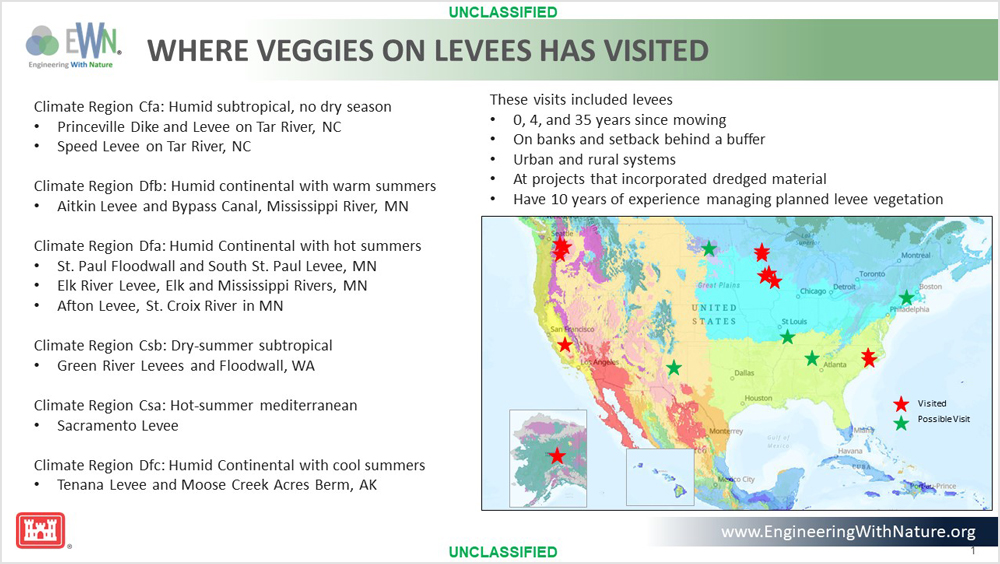This project addresses two basic questions:
- Can a Levee Have Multiple Benefits?
- Can managed, native plant communities on levees help regain some of the lost ecological, societal, and engineering benefits of riparian areas?

Our team includes experts in river processes, botany, ecology, economics, and geotechnical and levee safety from within the Corps of Engineers. We are learning from district levee inspectors, levee sponsors, and outside experts through site visits across the US.
Using the latest science, engineering, and field based experiences related to levees and riparian species, we identify where, when, and how local vegetation may be planted and managed to improve resilience and effectiveness of riverside levees, provide a benefit that the community values, and maintains or reduces expensive maintenance.
Traditional levee maintenance practices too often reduce or eliminate the benefits provided by a natural riparian area. Riparian zones are the area along the edges of rivers, often including banks and flood plains, where the soils and vegetation are shaped by the presence of water. Riparian zones connect the river and low floodplain, create soil that enables plant variety, provide shade to rivers and the community, reduce the excess nutrient and pollutant load in the river, and provide habitat for up to one-third of plant species and 60% of vertebrate species in the US.
Levees have narrowed river systems, altered the species composition near the river, reduced the water quality benefits, reduced air cooling benefits, and altered the channel processes, particularly sediment transport mechanics and in channel turbulence.
We are working to develop best practices that provide needed detail on how to choose vegetation that works with levee engineering parameters, provides ecosystem benefits, improves river sediment and hydraulic processes, provides aquatic benefits, requires minimal maintenance, maintains flood risk reduction, and works for the ecoregion and levee sponsor.
We are visiting levee systems across the US, in each of the major physiographic regions. During these visits we learn from systems where levees are maintained free of all plants, have been left unmanaged for 4-30+ years, and have had directed and managed woody plant growth for 10+ years.
We identify the appropriate plant species mixtures with the property making it applicable: plant canopy growth pattern and potential to generate shade, cool water temperature, and reduce invasive plants; plant root architecture and slope stability; pollinator benefits; nutrient uptake characteristics. We discuss where and when soil amendments would encourage microbial integration in the soil as the plants take root.
Included in our best practices will be the necessary information for designing and managing levees with riverside slope vegetation mixtures that combine to improve levee integrity and stability; reduce invasive species growth and burrowing animals; restores some of the lost riparian functions and benefits, and maintains the ability for levee inspection and flood fighting.
Looking for state of the science and engineering related to this topic? See the presentations and papers from workshops held to inform the vegetation chapter in the upcoming National Levee Safety Guidelines.
Research Overview
Looking for more information on the project? There is a 12 minute video below.






